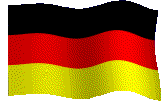German Software Reviewed |
 |
| Software Title: Talk Now ! - Eurotalk |
| Publisher : | Eurotalk |
| Age Group : | 10
- 12 |
| Curriculum Area : | German Language Software |
| Year of Publication : | 1995 |
| Mac, PC or other : | Win / Mac |
| Recommended Price | £29.99 / Network Version £320.00 |
| Summary |
As the product boasts, Talk now is
designed for people who want to learn a language quickly.
It's addictive, fun and makes learning easy.
Nine topics (first words, food, colours, phrases, parts of the body,
numbers, time, shopping and countries) are presented on a wheel and the user chooses a
topic. Within each topic, there are various
modes of interaction. Word practise which
teaches the vocabulary, easy game and hard game which tests the vocabulary, speaking
practise which allows the user to record their voice and practise pronunciation and
finally, the picture dictionary which allows the user to print out vocabulary both text
and picture.
| Overview of Teaching with this Title |
Listening, Reading and Speaking in
German are all supported in this product. Appropriate
vocabulary is introduced according to the topics outlined above.
The advantage of this product is that
it fully engages the user's interest. It is
attractive, colourful and stimulating. The
vocabulary is extensive enough to be a useful teaching tool yet not exhaustive as to tire
the user. The two levels of game provide
motivation to progress yet they are both attainable.
Scores are kept which maintain interest and motivation. A weakness of this product is that you can't
preview the picture dictionary before printing it out.
It would be useful to see the list of words and pictures on screen, whether
they are in colour or black and white, if they are suitable to topics being covered in
existing classroom practise or in existing materials etc.
Topics selected are not greyed out or disabled in any way to indicate that
they have been accessed, therefore the teacher can't keep track of what sections were
covered. When learning vocabulary, no text is
written to accompany the pictures of the nouns. The
user develops aural skills only.
| Content |
In general the content is accurate
reliable and up-to-date, with the exception of one grammatical error where one word is
incorrectly spoken and doesn't correspond to the written word. (einen Fahrkarte/eine
Fahrkarte)
It is culturally, gender and racially non-biased. Images
of people from different cultures are used e.g. Indians, South Africans, Europeans. There is a gender balance. Both a man and a woman are represented visually
and aurally in the product.
Two levels of difficulty are included in each topic, although there is little real
difference in ability required. A final
matching game using all the vocabulary and skills in the program can be played also. It increases with difficulty as you play and is
considerably more challenging.
The user has no control over the rate of delivery but can control the level of difficulty
by choosing different tasks.
| Design and Navigation |
Onscreen help is available in over
forty different languages. It is available at
all times in written and spoken form. To
change the language, in which the help is given, one must return to the first frame.
The volume can be adjusted at the start of the game.
The software does not support use of the keyboard instead of the mouse.
The interface is extremely clear, uncluttered and easy to use. No instructions or prior reading of the
documentation are necessary to navigate the package.
Primary school children navigated the package quickly and without any
difficulty.
There is a very short musical introduction that cannot be bypassed however it's not
intrusive.
Users cannot bookmark where they have been or record an individual user's place. It is easy to choose a topic however there is no
obvious icon to go back or to stop the game.
Spoken feedback is encouraging and positive throughout the program. In the "difficult" game, if the wrong
item is clicked, it is taken away and the choice is reduced for the user. Spoken words can be repeated as often as the user
requires. Scores are kept and displayed on a
barometer. A bronze, silver and gold award
can be achieved depending on scores. The
ultimate score is 1800 points. A record of
scores can be printed.
It is possible to create, delete and print records at the start of the program. A printout displays the name of the user, the date
they last used the software, the score achieved and if an award was given. It does not note what section was covered, for how
long or how successfully.
| Installation and Use |
There is an auto play feature that
starts the game when you insert the CDROM. This
can be disabled in QuickTime Settings in the Control Panel, as advised on the CDROM cover.
To my knowledge there is no network version of the program available.
For the purpose of this project SIP21A, only one CDROM was used on one PC.
| Supporting Documentation |
There are no ancillary teacher notes and pupil activities with this product.
The information is structured in nine topic-based sections, which teach vocabulary, test
vocabulary in the form of games, practise vocabulary in the form of speech and allow
printout of vocabulary.